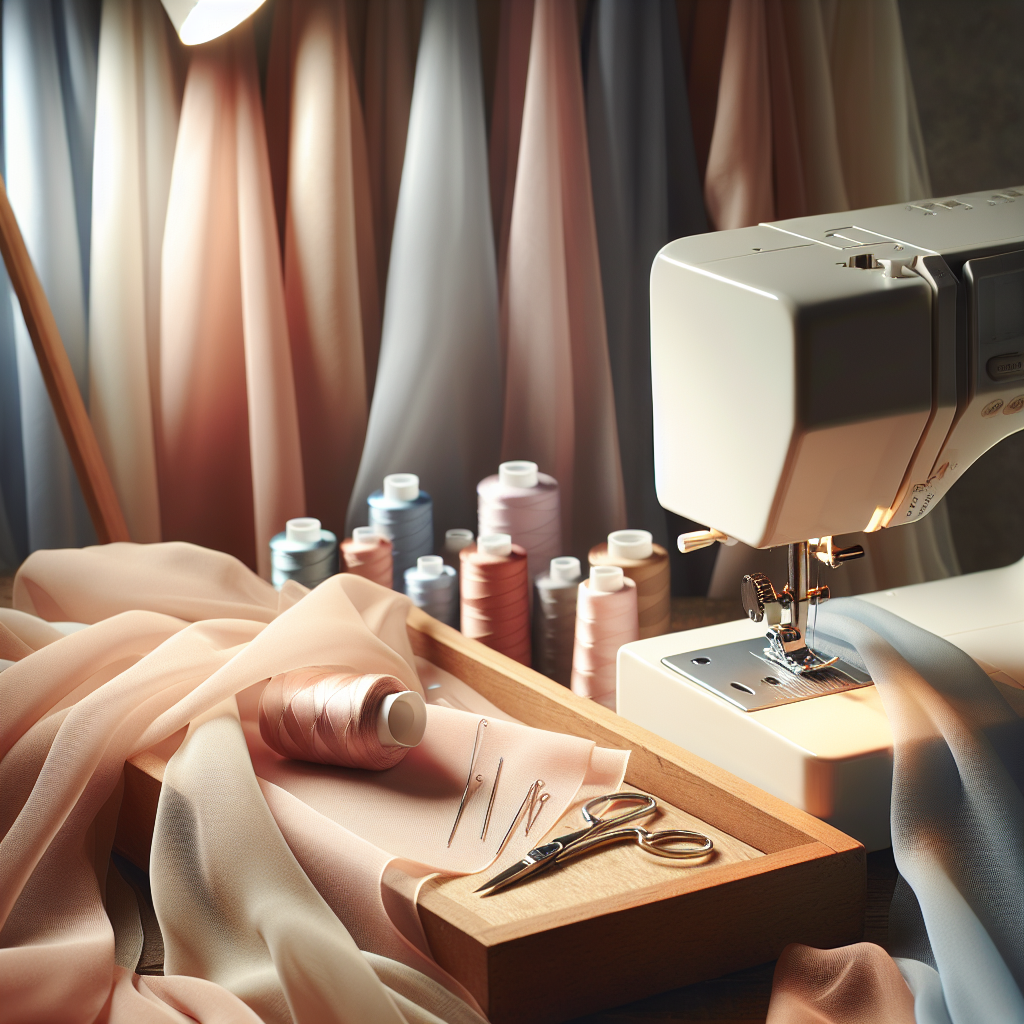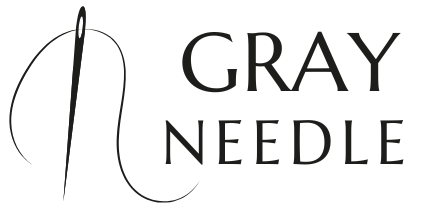When it comes to sewing, understanding the characteristics of lightweight fabrics is crucial for achieving the best results. These fabrics, which include materials like chiffon, silk, and lightweight cotton, are often chosen for their drape and flow. However, they can present unique challenges, particularly puckering. Puckering occurs when the fabric gathers or ripples during sewing, creating an unsightly appearance that can ruin your project.
The primary cause of puckering in lightweight fabrics is the tension applied during sewing. If the tension is too tight, the fabric can curl or bunch, leading to those unwanted waves. Additionally, the feed mechanism of your sewing machine may not adequately accommodate the delicate nature of these fabrics, further contributing to the problem.
To combat these issues, it’s essential to take specific steps:
- Choose the Right Needle: Use a fine needle designed specifically for lightweight fabrics.
- Adjust Tension Settings: Lower the tension on your sewing machine to allow the fabric to move freely.
- Use a Walking Foot: This tool helps maintain an even feed of the fabric layers.
With these strategies in mind, you can effectively learn how to sew lightweight fabrics without puckering. For more tips and resources, visit our website to learn more and get started today! Click here.
Essential Tools for Sewing Lightweight Fabrics
Having the right tools is essential for successfully sewing lightweight fabrics. These tools not only make the process smoother but also help to prevent common issues like puckering. Here are some must-have tools that every sewing enthusiast should consider:
- Lightweight Needles: Opt for microtex or universal needles with a fine point. These needles are designed to penetrate delicate fabrics without causing damage.
- Walking Foot: A walking foot helps to evenly feed lightweight fabrics through the sewing machine, minimizing the risk of shifting or puckering.
- Fabric Clips: Instead of pins, use fabric clips to hold layers together. Pins can leave holes in delicate fabrics and may shift them during sewing.
- Cutting Mat and Rotary Cutter: A cutting mat protects your work surface while a rotary cutter provides clean, precise cuts, which are critical for achieving smooth edges.
- Pressing Tools: A good iron and pressing cloth are essential for removing wrinkles and setting seams without damaging the fabric.
Having these tools on hand will not only improve your experience when working with lightweight fabrics but also elevate the quality of your finished garments. Investing in the right equipment can make all the difference in your sewing projects.
Techniques to Prevent Puckering in Sewing

Puckering is a common issue when sewing lightweight fabrics, but with the right techniques, you can achieve a smooth finish. Here are several effective methods to help you prevent puckering:
- Use a Stabilizer: Applying a tear-away or wash-away stabilizer can provide additional support to lightweight fabrics during sewing, helping to maintain shape and structure.
- Adjust Tension Settings: Fine-tuning your sewing machine’s tension can significantly reduce puckering. Start with a lower tension setting and adjust as needed to find the perfect balance.
- Sew with a Longer Stitch Length: Using a longer stitch length (about 3.0 to 4.0 mm) allows the fabric to move more freely, reducing the likelihood of puckering.
- Pinning Techniques: When pinning, place pins perpendicular to the seam line and ensure they are spaced closely together. This helps to minimize shifting of the fabric layers.
- Gentle Handling: Handle lightweight fabrics with care; avoid pulling or stretching the fabric as you sew. Instead, guide it gently through the machine to maintain its natural drape.
Incorporating these techniques into your sewing routine will not only help you avoid puckering but also enhance your overall sewing skills. With practice, you’ll be able to create beautiful, professional-looking garments from lightweight fabrics.
Choosing the Right Needle and Thread for Lightweight Fabrics

When sewing lightweight fabrics, selecting the appropriate needle and thread is crucial for achieving a flawless finish without puckering. Here’s what you need to consider:
- Needle Type: Opt for a universal needle or a lightweight needle (size 60/8 or 70/10) specifically designed for delicate fabrics. These needles have a finer point that helps to penetrate the fabric without causing damage.
- Thread Weight: Use a lighter weight thread, like cotton or polyester thread in a weight of 50 or finer. This helps in keeping the stitches minimal and reduces the risk of puckering.
- Thread Material: Choose a thread material that complements your fabric type. For example, polyester thread is versatile and works well with most lightweight fabrics, while cotton thread can be ideal for natural fibers.
- Color Matching: Ensure that the thread color closely matches your fabric. This not only enhances the overall appearance but also minimizes the visibility of any potential puckering.
- Test Swatches: Before starting your project, always sew a test swatch using your chosen needle and thread combination. This allows you to make any necessary adjustments for a smoother sewing experience.
By carefully selecting the right needle and thread, you’ll set the foundation for successful sewing with lightweight fabrics, ensuring a beautiful end result.
Preparing Lightweight Fabrics Before Sewing

Properly preparing lightweight fabrics before sewing is essential for achieving a seamless finish. By following a few key steps, you can significantly reduce the chances of puckering and ensure that your project turns out beautifully. Here are the steps to consider:
- Pre-Wash Your Fabric: Always pre-wash your lightweight fabric to remove any sizing or finishes that can affect the sewing process. This also helps in preventing future shrinkage.
- Ironing: After washing, gently iron your fabric on a low setting to remove wrinkles. Use a pressing cloth to protect delicate surfaces, as high heat can damage some lightweight materials.
- Stabilizing: Consider using a lightweight stabilizer or interfacing, especially for fabrics prone to stretching. This adds stability and support during sewing, which helps maintain the fabric’s integrity.
- Cutting Techniques: When cutting your fabric, ensure you use sharp scissors or a rotary cutter to achieve clean edges. Always lay your fabric flat and avoid pulling or stretching it during the cutting process.
- Pinning: Use fine pins to secure your fabric layers together. Avoid using bulky clips that can leave marks or distort the fabric. Pinning at regular intervals will help keep everything in place while minimizing movement.
By taking the time to prepare your lightweight fabrics thoroughly, you’ll ensure a smoother sewing experience and a more polished final product.
Finishing Techniques for Lightweight Fabric Projects

Once you have successfully sewn your lightweight fabric project, employing effective finishing techniques is crucial to achieving a professional look. These methods not only enhance the garment’s durability but also prevent issues like fraying or puckering that can occur in delicate fabrics. Here are some finishing techniques to consider:
- French Seams: This technique encloses raw edges and is perfect for lightweight fabrics. To create a French seam, sew the fabric wrong sides together, trim the seam allowance, and then sew again with right sides together, encasing the raw edge.
- Bias Binding: Using bias tape to finish edges can provide a clean and polished look. Simply cut bias strips and sew them along the edges of your fabric for a neat finish.
- Overlocking: If you have access to an overlock machine, this is an excellent way to finish seams on lightweight fabrics. Overlocking prevents fraying and provides a professional edge.
- Hemming: For hems, consider using a narrow rolled hem or a blind hem stitch. Both techniques work well on lightweight fabrics, ensuring that the hem lies flat without adding bulk.
- Pressing: Always press your seams open or to one side as you go. This helps to set your stitches and gives your project a crisp, finished appearance.
By utilizing these finishing techniques, your lightweight fabric projects will not only look stunning but will also stand the test of time. Visit our website to learn more and get started today! Click here.

